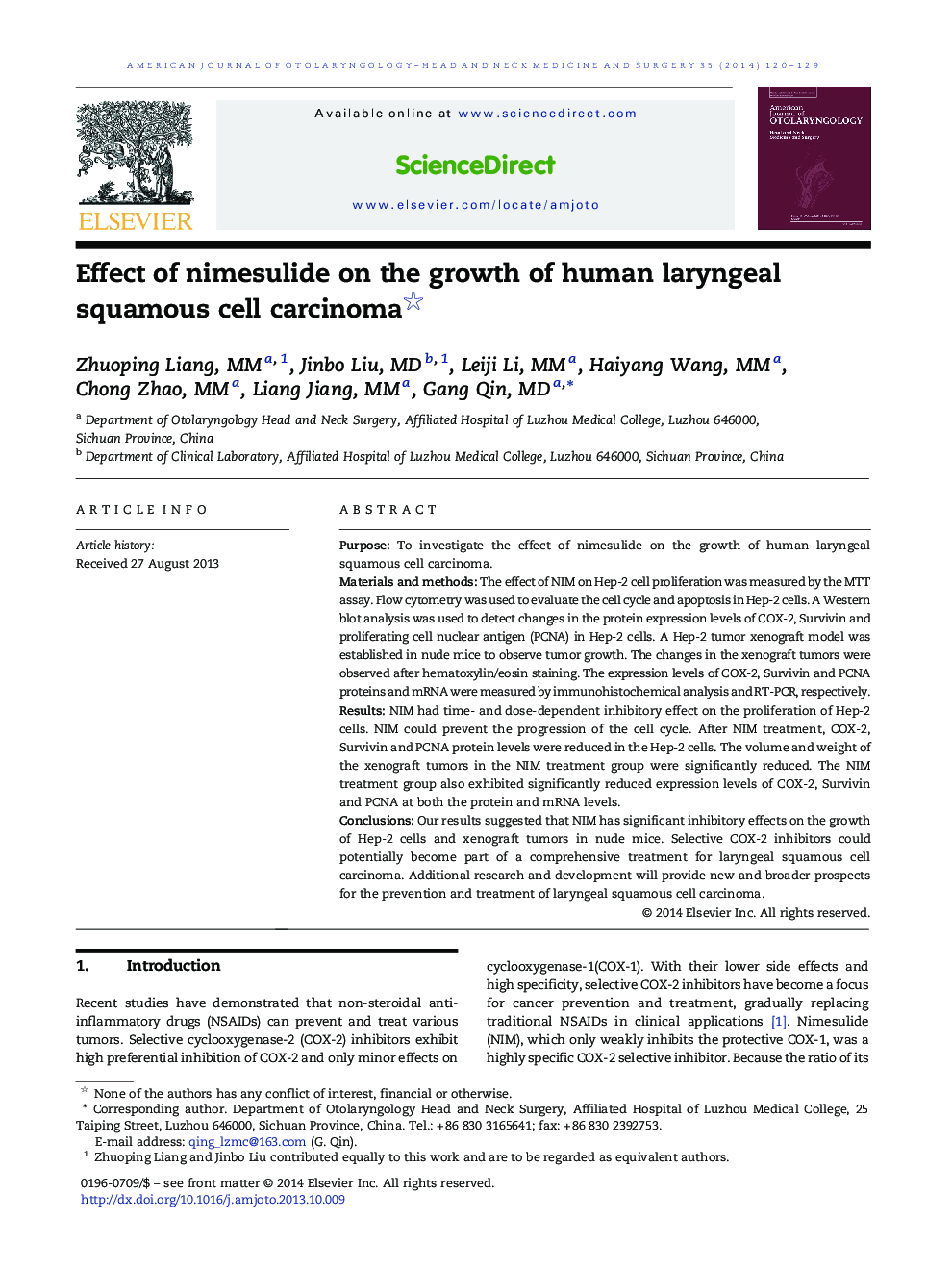| Article ID | Journal | Published Year | Pages | File Type |
|---|---|---|---|---|
| 4103487 | American Journal of Otolaryngology | 2014 | 10 Pages |
PurposeTo investigate the effect of nimesulide on the growth of human laryngeal squamous cell carcinoma.Materials and methodsThe effect of NIM on Hep-2 cell proliferation was measured by the MTT assay. Flow cytometry was used to evaluate the cell cycle and apoptosis in Hep-2 cells. A Western blot analysis was used to detect changes in the protein expression levels of COX-2, Survivin and proliferating cell nuclear antigen (PCNA) in Hep-2 cells. A Hep-2 tumor xenograft model was established in nude mice to observe tumor growth. The changes in the xenograft tumors were observed after hematoxylin/eosin staining. The expression levels of COX-2, Survivin and PCNA proteins and mRNA were measured by immunohistochemical analysis and RT-PCR, respectively.ResultsNIM had time- and dose-dependent inhibitory effect on the proliferation of Hep-2 cells. NIM could prevent the progression of the cell cycle. After NIM treatment, COX-2, Survivin and PCNA protein levels were reduced in the Hep-2 cells. The volume and weight of the xenograft tumors in the NIM treatment group were significantly reduced. The NIM treatment group also exhibited significantly reduced expression levels of COX-2, Survivin and PCNA at both the protein and mRNA levels.ConclusionsOur results suggested that NIM has significant inhibitory effects on the growth of Hep-2 cells and xenograft tumors in nude mice. Selective COX-2 inhibitors could potentially become part of a comprehensive treatment for laryngeal squamous cell carcinoma. Additional research and development will provide new and broader prospects for the prevention and treatment of laryngeal squamous cell carcinoma.
